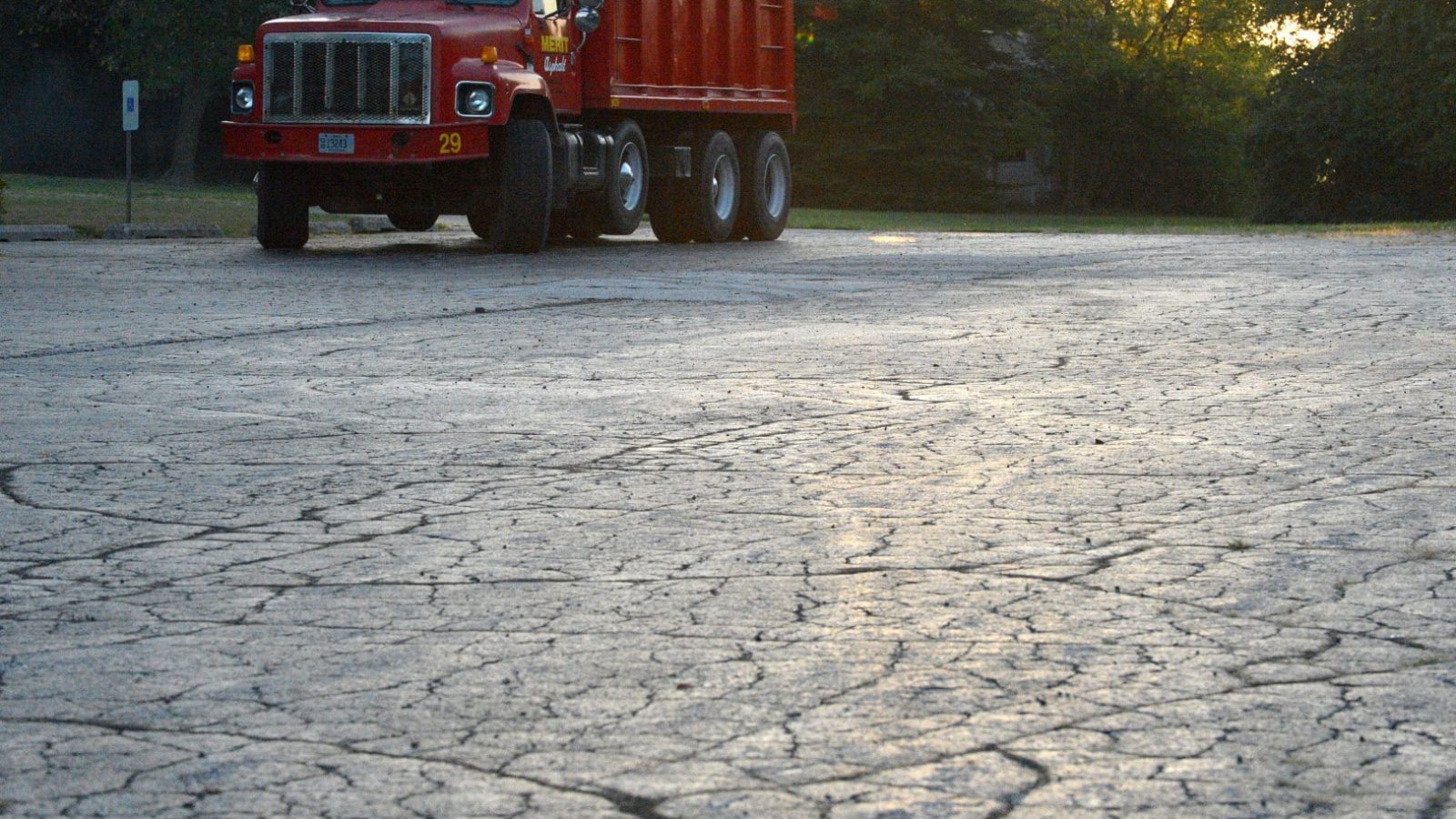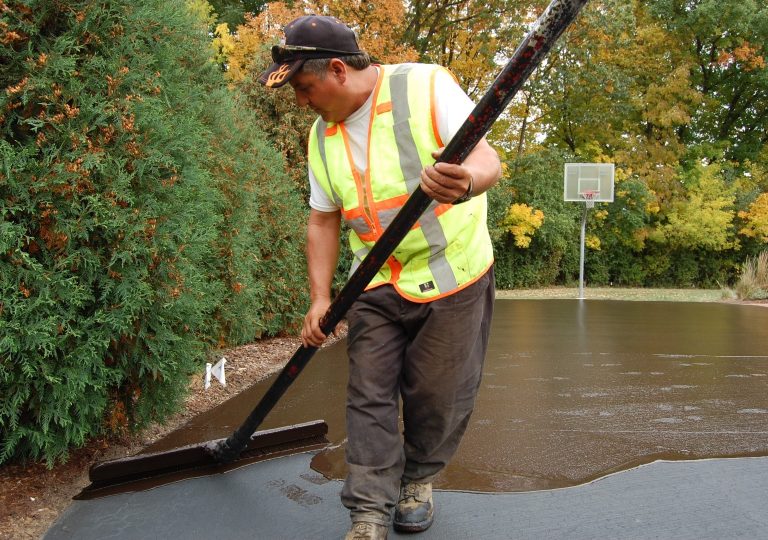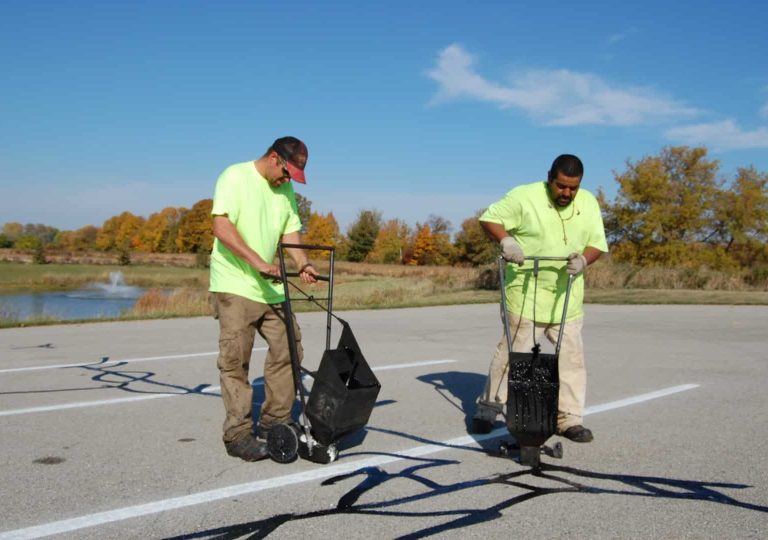Maintenance
It didn’t take us 40 years to get it right. We’ve been doing it right for 40 years.
Make the most of your investment
Asphalt Maintenance
As your full-service paving company, Merit Asphalt can take care of your pavement for years to come. Our services range from driveway seal coating to parking lot maintenance to help you protect your investment and maximize the life of your asphalt.
Why Does My Asphalt Crack?
There are many different reasons that asphalt cracks. Weather, proximity to trees, and the freeze/thaw cycle, are some of the factors that can cause cracking.
Dry weather — Generally, most cracking occurs during periods of minimal rainfall and warm temperatures. The lack of moisture in the soil causes the ground to contract and separate. Visible cracks and gaps in a lawn are telltale signs that the soil is contracting. This shrinking of the soil occurs not only on the edges of pavement, but also underneath it. It is this movement which leads to the cracking of the asphalt.
Trees/shrub — Asphalt pavement installed in close proximity to trees or shrubs is likely to crack. Root systems draw water out of the soil. During periods of low rainfall, this process causes ground movement which in turn results in cracking.
Freeze/thaw cycles — The seasonal weather of Wisconsin puts a great deal of stress on pavements. The freezing and thawing of the ground can cause the asphalt to rise and fall. This vertical movement sometimes results in cracking.
An inadequate stone base or heavy traffic can also cause cracking. These conditions are caused by poor installation and poor design, rather than the natural factors listed above.

Asphalt Maintenance
Asphalt Sealcoating
What is Sealcoating?
Sealcoating protects asphalt from the damaging effects of the environment, including moisture and ultraviolet oxidation, while restoring color and uniformity. It also minimizes raveling (the loss of aggregate) and fills minor voids in the surface to maintain safety.
How Often Do I Need to Sealcoat?
New asphalt should be sealed 9-12 months after installation. Sealcoat should then be applied every two to three years, depending on traffic volume and overall condition of the asphalt.
Can All Asphalt be Sealcoated?
Not all asphalt should be sealcoated. Pavements that exhibit extensive alligator cracking, base failure, or severe surface oxidation will not significantly benefit from sealcoating. To ensure proper adhesion, your asphalt surface should be evaluated prior to an application of sealcoat.
How Long Does Sealcoating Take?
Normal curing time for sealcoat is 24 hours for moderate temperature and humidity conditions.
Asphalt Maintenance
Asphalt Crack Sealing and Crack Routing
What is Crack Sealing?
Crack sealing is a repair which fills cracks with a hot, elastic material. It’s a cost-effective way to maintain your asphalt and prevent major damage so you can extend the life of your pavement.
Why Does Asphalt Need Crack Sealing?
Subgrade moisture is one of the leading causes of pavement failure, and crack sealing helps prevent moisture infiltration to extend pavement life and save money. Typically, we recommend sealing cracks ¼ inch wide or greater.
What is Crack Routing?
Asphalt crack routing is an advanced method of crack sealing. A router is used to create a clean, dry, reservoir so cracks can be evenly sealed with an elastic material that protects against moisture infiltration. It’s the most cost-effective way to maintain your asphalt and prevent major damage so you can extend the life of your pavement.
Asphalt Maintenance
Asphalt Patching and Repairs
Common Asphalt Repairs
- Potholes
- Utility Cuts and Trenches
- Manholes and Catch Basins
- Snowplow Damage
- Dumpster Areas
- High Traffic Areas
- Loading Docks
- Correction Of Low and High Spots
- Sunken Areas Along Foundations and Garage Doors
Asphalt Patching
Sawcut Patching — This is the most durable and longest lasting asphalt repair. The failed area is removed, a new stone base is installed and then the area is re-paved. Common repairs are loading docks, dumpster areas, and high traffic areas.
Skin Patching — This method involves filling in low areas by adding asphalt. A glue is applied to the low area and then asphalt is installed to fill the depression. Skin patching does not provide the durability of a sawcut repair. Common repairs are potholes, low areas along foundations and in front of garage doors.






